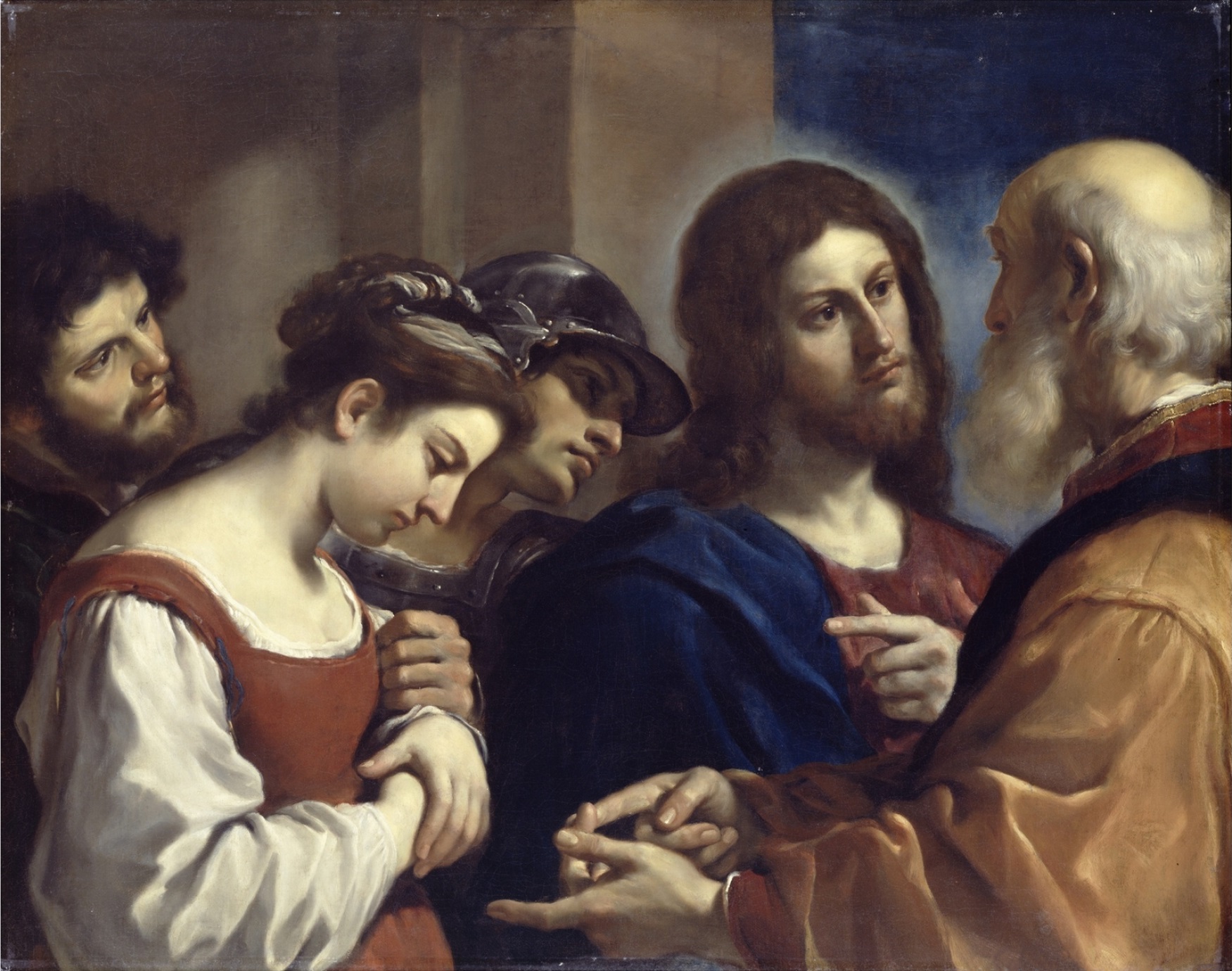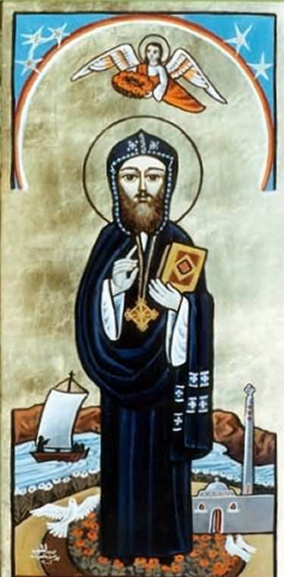|
Paul Of Edessa (translator)
Mar Paul (Syriac ''Pawla''), usually known as Paul of Edessa or Paul of Cyprus, was the Byzantine Syriac Orthodox metropolitan of Edessa who was forced to abandon his see between about 602 and 629, when it fell under the Sasanian Empire. He was an important translator of Greek theological works into Syriac. He should not be confused with the Bishop Paul of Edessa who died in 526. According to Jacob of Edessa, Paul fled to Egypt with many other bishops to escape the Sasanian invasion and occupation of Mesopotamia precipitated by the defection and rebellion of Narses, governor of Mesopotamia, who seized Edessa with Sasanian support in 602–03. He then fled Egypt for Cyprus to escape the Sasanian conquest of Egypt in 618–621. At the time of his translation work on Cyprus he was described as an archimandrite (supervisor of abbots). Paul probably came out of the monastic complex of Qenneshre. A scribal notation in a manuscript dated to 675, refers to a Syriac version of the '' Gl ... [...More Info...] [...Related Items...] OR: [Wikipedia] [Google] [Baidu] |
Syriac Language
The Syriac language (; syc, / '), also known as Syriac Aramaic (''Syrian Aramaic'', ''Syro-Aramaic'') and Classical Syriac ܠܫܢܐ ܥܬܝܩܐ (in its literary and liturgical form), is an Aramaic language, Aramaic dialect that emerged during the first century AD from a local Aramaic dialect that was spoken by Arameans in the ancient Aramean kingdom of Osroene, centered in the city of Edessa. During the Early Christian period, it became the main literary language of various Aramaic-speaking Christian communities in the historical region of Syria (region), Ancient Syria and throughout the Near East. As a liturgical language of Syriac Christianity, it gained a prominent role among Eastern Christian communities that used both Eastern Syriac Rite, Eastern Syriac and Western Syriac Rite, Western Syriac rites. Following the spread of Syriac Christianity, it also became a liturgical language of eastern Christian communities as far as India (East Syriac ecclesiastical province), India ... [...More Info...] [...Related Items...] OR: [Wikipedia] [Google] [Baidu] |
Byzantine Crete
The island of Crete came under the rule of the Byzantine Empire in two periods: the first extends from the late antique period (3rd century) to the conquest of the island by Andalusian exiles in the late 820s, and the second from the island's reconquest in 961 to its capture by the competing forces of Genoa and Venice in 1205. History First Byzantine period Under Roman rule, Crete was part of the joint province as Crete and Cyrenaica. Under Diocletian (r. 284–305) it was formed as a separate province, while Constantine the Great (r. 306–337) subordinated it to the Diocese of Moesiae (and later the Diocese of Macedonia) within the praetorian prefecture of Illyricum, an arrangement that persisted until the end of late antiquity.Kazhdan (1991), p. 545Nesbitt & Oikonomides (1994), p. 94 Some administrative institutions, like the venerable ''Koinon'' of the island, persisted until the end of the fourth century,Detorakis (1986), p. 129 but as elsewhere in the empire these prov ... [...More Info...] [...Related Items...] OR: [Wikipedia] [Google] [Baidu] |
Peshitta
The Peshitta ( syc, ܦܫܺܝܛܬܳܐ ''or'' ') is the standard version of the Bible for churches in the Syriac tradition, including the Maronite Church, the Chaldean Catholic Church, the Syriac Catholic Church, the Syriac Orthodox Church, the Malabar Independent Syrian Church (Thozhiyoor Church), the Syro-Malankara Catholic Church, the Mar Thoma Syrian Church, the Assyrian Church of the East and the Syro-Malabar Church. The consensus within biblical scholarship, although not universal, is that the Old Testament of the Peshitta was translated into Syriac from Biblical Hebrew, probably in the 2nd century AD, and that the New Testament of the Peshitta was translated from the Greek, probably in the early 5th century. This New Testament, originally excluding certain disputed books (2 Peter, 2 John, 3 John, Jude, Revelation), had become a standard by the early 5th century. The five excluded books were added in the Harklean Version (AD 616) of Thomas of Harqel. Etymology ''Pes ... [...More Info...] [...Related Items...] OR: [Wikipedia] [Google] [Baidu] |
List Of Syriac New Testament Manuscripts
Syriac-language manuscripts of the New Testament include some of the earliest and most important witnesses for textual criticism of the New Testament. Over 350 Syriac manuscripts of the New Testament have survived into the 21st century. The majority of them represent the Peshitta version. Only a very few manuscripts represent Old Syriac versions. Some manuscripts represent a mixed or eclectic text. Manuscripts housed at the British Library, Additional Manuscripts Manuscripts housed in the Bodleian Library * Dawkins 27, * Huntington MS 133 — Bodleian Library [Baidu] |
Jesus And The Woman Taken In Adultery
Jesus and the woman taken in adultery (or the ) is a passage (pericope) found in John 7:53– 8:11 of the New Testament. It has been the subject of much scholarly discussion. In the passage, Jesus was teaching in the Second Temple after coming from the Mount of Olives. A group of scribes and Pharisees confronts Jesus, interrupting his teaching. They bring in a woman, accusing her of committing adultery, claiming she was caught in the very act. They tell Jesus that the punishment for someone like her should be stoning, as prescribed by Mosaic Law. Jesus begins to write something on the ground using his finger; when the woman's accusers continue their challenge, he states that the one who is without sin is the one who should cast the first stone at her. The accusers and congregants depart, realizing not one of them is without sin either, leaving Jesus alone with the woman. Jesus asks the woman if anyone has condemned her and she answers no. Jesus says that he, too, does not c ... [...More Info...] [...Related Items...] OR: [Wikipedia] [Google] [Baidu] |
Gospel Of John
The Gospel of John ( grc, Εὐαγγέλιον κατὰ Ἰωάννην, translit=Euangélion katà Iōánnēn) is the fourth of the four canonical gospels. It contains a highly schematic account of the ministry of Jesus, with seven "signs" culminating in the raising of Lazarus (foreshadowing the resurrection of Jesus) and seven "I am" discourses (concerned with issues of the Split of early Christianity and Judaism, church–synagogue debate at the time of composition) culminating in Doubting Thomas, Thomas' proclamation of the risen Jesus as "my Lord and my God". The gospel's concluding verses set out its purpose, "that you may believe that Jesus is the Christ, the Son of God, and that believing you may have life in his name." John reached its final form around AD 90–110, although it contains signs of origins dating back to AD 70 and possibly even earlier. Like the three other gospels, it is anonymous, although it identifies an unnamed "disciple whom Jesus loved" as t ... [...More Info...] [...Related Items...] OR: [Wikipedia] [Google] [Baidu] |
John Psaltes
John Psaltes was the abbot of Qenneshre in the late 6th century. He wrote hymns in Greek that were translated by Paul of Edessa into Syriac, probably while he was on Cyprus in the 620s. The Syriac text was revised in 675 by Jacob of Edessa. Around 600, John wrote a hymn in honour of the martyrs of Najran. He may have relied on the Syriac ''Book of the Himyarites'', since the hymn's brief introduction gives the name of Dhū Nuwās, the persecutor of Najran, as Masrūq, a name otherwise only attested in the ''Book''. The hymn has been translated into English by Ernest Walter Brooks Ernest Walter Brooks, FBA (30 August 1863 – 26 March 1955) was an English ancient historian and scholar of Syriac. The son of a priest, he was educated at Eton College (as a King's Scholar) and then at King's College, Cambridge, where he read c .... Notes Works cited * * *{{cite book , first=Jack B. , last=Tannous , title=The Making of the Medieval Middle East: Religion, Society, and Simple Believers ... [...More Info...] [...Related Items...] OR: [Wikipedia] [Google] [Baidu] |
John Bar Aphtonia
John bar Aphtonia (c.480–537) was a Syriac Christianity, Syriac monk of the Miaphysite persuasion who founded the monastery of Qenneshre ("Eagle's Nest") around 530. A key figure in the transmission of Greek thought and literary culture into a Syriac milieu, his monastery became the intellectual centre of the Syriac Orthodox, West Syriac world for the next three centuries. John was born in Edessa and raised by his mother, Aphtonia. (His surname means "son of Aphtonia".) His father was a rhetor. John himself was bilingual in both the Syriac language and Greek language, Greek. At the age of fifteen he was sent to the monastery of Saint Thomas in Seleucia Pieria near Antioch. Sometime between 528 and 531, he left with several other Miaphysite-leaning monks facing persecution from the pro-Chalcedonian imperial authorities. They established the monastery of Qenneshre on the banks of the Euphrates near Jarabulus and elected John as their first abbot. According to the historian Zacharias ... [...More Info...] [...Related Items...] OR: [Wikipedia] [Google] [Baidu] |
Severus Of Antioch
Severus the Great of Antioch (Greek: Σεβῆρος; syr, ܣܘܝܪܝܘܣ ܕܐܢܛܝܘܟܝܐ), also known as Severus of Gaza or Crown of Syrians (Syriac: ܬܓܐ ܕܣܘܪܝܥܝܐ; Tagha d'Suryoye; Arabic: تاج السوريين; Taj al-Suriyyun), was the Patriarch of Antioch, and head of the Syriac Orthodox Church, from 512 until his death in 538. He is venerated as a saint in the Oriental Orthodox Church, and his feast day is 8 February. Biography Early life and education Severus was born in the city of Sozopolis in Pisidia in c. 459,Barsoum (2003), p. 92 or c. 465, into an affluent Christian family, however, later Miaphysite sources would assert that his parents were pagan.Witakowski (2004), pp. 115-116 His father was a senator in the city,Chapman (1911) and his paternal grandfather, also named Severus, [...More Info...] [...Related Items...] OR: [Wikipedia] [Google] [Baidu] |
Antiphon
An antiphon (Greek ἀντίφωνον, ἀντί "opposite" and φωνή "voice") is a short chant in Christian ritual, sung as a refrain. The texts of antiphons are the Psalms. Their form was favored by St Ambrose and they feature prominently in Ambrosian chant, but they are used widely in Gregorian chant as well. They may be used during Mass, for the Introit, the Offertory or the Communion. They may also be used in the Liturgy of the Hours, typically for Lauds or Vespers. They should not be confused with Marian antiphons or processional antiphons. When a chant consists of alternating verses (usually sung by a cantor) and responds (usually sung by the congregation), a refrain is needed. The looser term antiphony is generally used for any call and response style of singing, such as the kirtan or the sea shanty and other work songs, and songs and worship in African and African-American culture. Antiphonal music is that performed by two choirs in interaction, often singing ... [...More Info...] [...Related Items...] OR: [Wikipedia] [Google] [Baidu] |
Pseudo-Nonnos
Pseudo-Nonnus, also called Nonnus Abbas (i.e. "Nonnus the Abbot"), was a 6th-century commentator on Gregory of Nazianzus. His ''Commentaries'' consist of scholia explaining the meaning of Gregory's many allusions to Greek mythology. It was written in Greek and translated into Syriac, Armenian and Georgian. The earliest complete text is the Syriac translation of Paul of Edessa from 623 or 624. There are illustrated manuscripts An illuminated manuscript is a formally prepared document where the text is often supplemented with flourishes such as borders and miniature illustrations. Often used in the Roman Catholic Church for prayers, liturgical services and psalms, the ... of the ''Commentaries''. Notes References * * * Commentators 6th-century Byzantine people {{Byzantine-bio-stub ... [...More Info...] [...Related Items...] OR: [Wikipedia] [Google] [Baidu] |





